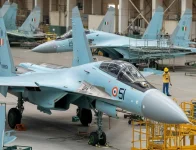- Views: 981
- Replies: 1

India's acquisition of 31 MQ-9B Predator drones from the US, a deal valued at USD 3.99 billion, marks the culmination of nearly a decade of complex negotiations and shifting priorities.
The journey to secure these advanced unmanned aerial systems (UAS) began in 2015, driven by the Indian Navy's need for persistent surveillance capabilities in the Indian Ocean Region, particularly in light of China's growing naval presence.
Initially, India sought High Altitude Long Endurance (HALE) drones, a technology not readily available except from the United States. However, US restrictions on exporting such advanced systems to non-treaty partners posed a significant hurdle. The Obama administration's reluctance stemmed from the sensitive nature of the technology, extensively used by the US in counterterrorism operations.
The landscape shifted with the rise of China as a major drone exporter and the US recognizing India as a key strategic partner in the Indo-Pacific region. In 2016, India was designated a Major Defence Partner, paving the way for closer defence cooperation.
The Trump administration subsequently offered India the surveillance version of the MQ-9B Sea Guardians in 2017, a significant breakthrough as India became the first non-treaty partner to be offered such advanced UAS technology.
While the initial plan focused on acquiring 22 drones for the Indian Navy, the Indian Army soon expressed interest in the armed version of the MQ-9B, capable of carrying a substantial payload of sensors, laser-guided bombs, and air-to-ground missiles. This expanded the scope of the acquisition, leading to a tri-service procurement strategy to reduce costs and distribute the financial burden across the services.
Despite the progress, negotiations faced challenges due to high costs and the US's initial unwillingness to share technology or establish infrastructure in India. A breakthrough came in 2020 with the introduction of the new Defence Acquisition Procedure, which allowed for the leasing of defence equipment. The Indian Navy capitalized on this opportunity, leasing two Sea Guardians for immediate deployment.
Interestingly, these leased drones, while operated by the Navy, have been deployed along India's western and northern borders, highlighting their versatility and the collaborative approach among the armed forces. The MQ-9B's capabilities extend beyond surveillance, enabling real-time search and patrol, anti-submarine warfare through sonobuoy integration, and precision strikes on strategic targets.
The final push for the deal came in 2021 after initial hesitation from the Indian Air Force, which was concerned about the impact on funding for its fighter aircraft programs. However, the three services ultimately reached a consensus, recognizing the strategic value of the MQ-9B.
The deal was finalized in February 2023, with the US government approving the sale of 31 MQ-9B drones and associated equipment. This includes various munitions, such as Hellfire missiles and laser-guided bombs, along with logistics support and a performance-based logistics contract with General Atomics for depot-level maintenance in India. The Indian Navy will receive 15 drones in maritime and anti-submarine warfare configurations, while the Army and Air Force will each receive 8 land-based versions.
This landmark acquisition signifies a deepening of India-US defence ties and provides India with a crucial capability to enhance its surveillance and strike capabilities across various domains.The MQ-9B drones are expected to play a significant role in safeguarding India's national security interests in the face of evolving regional challenges.


